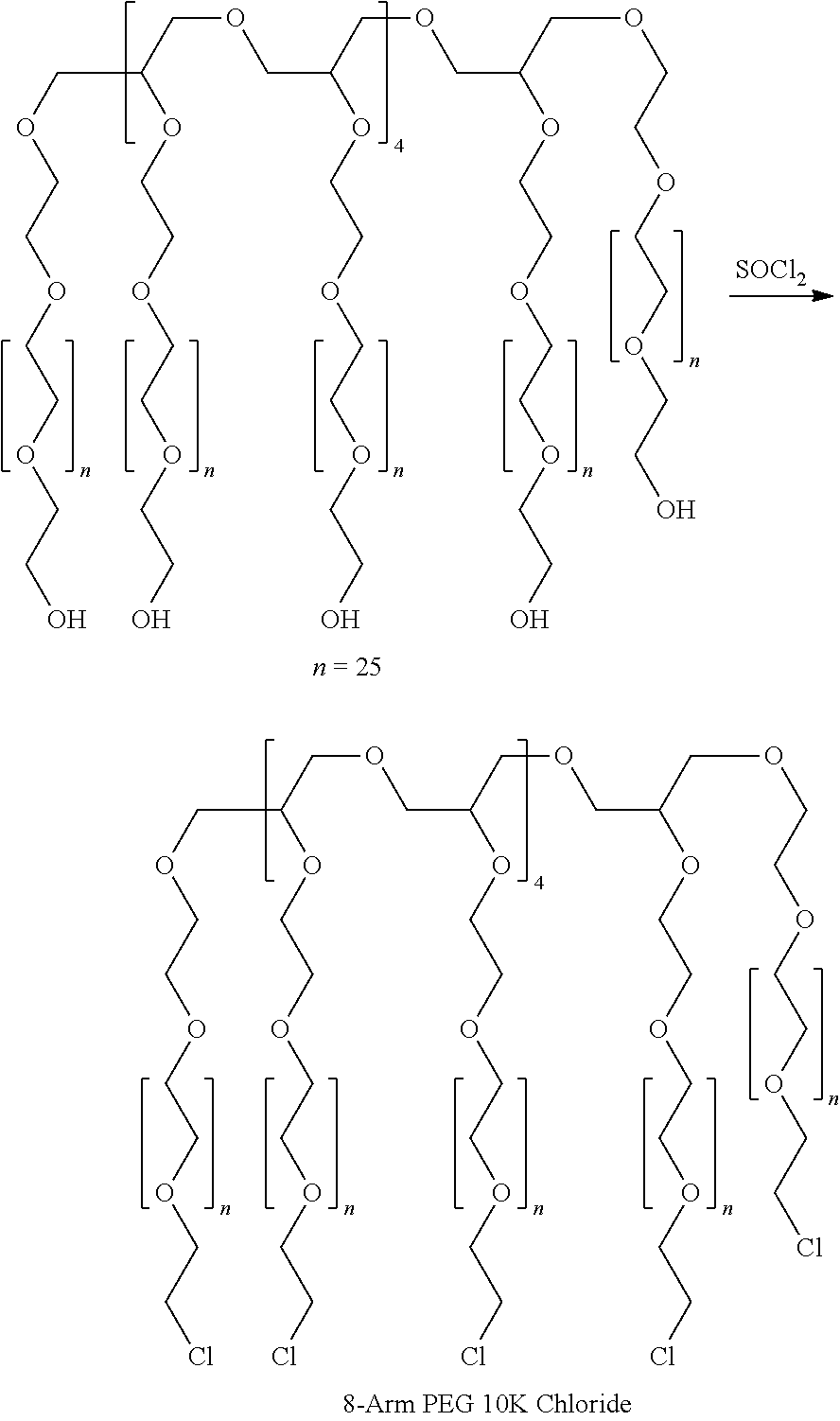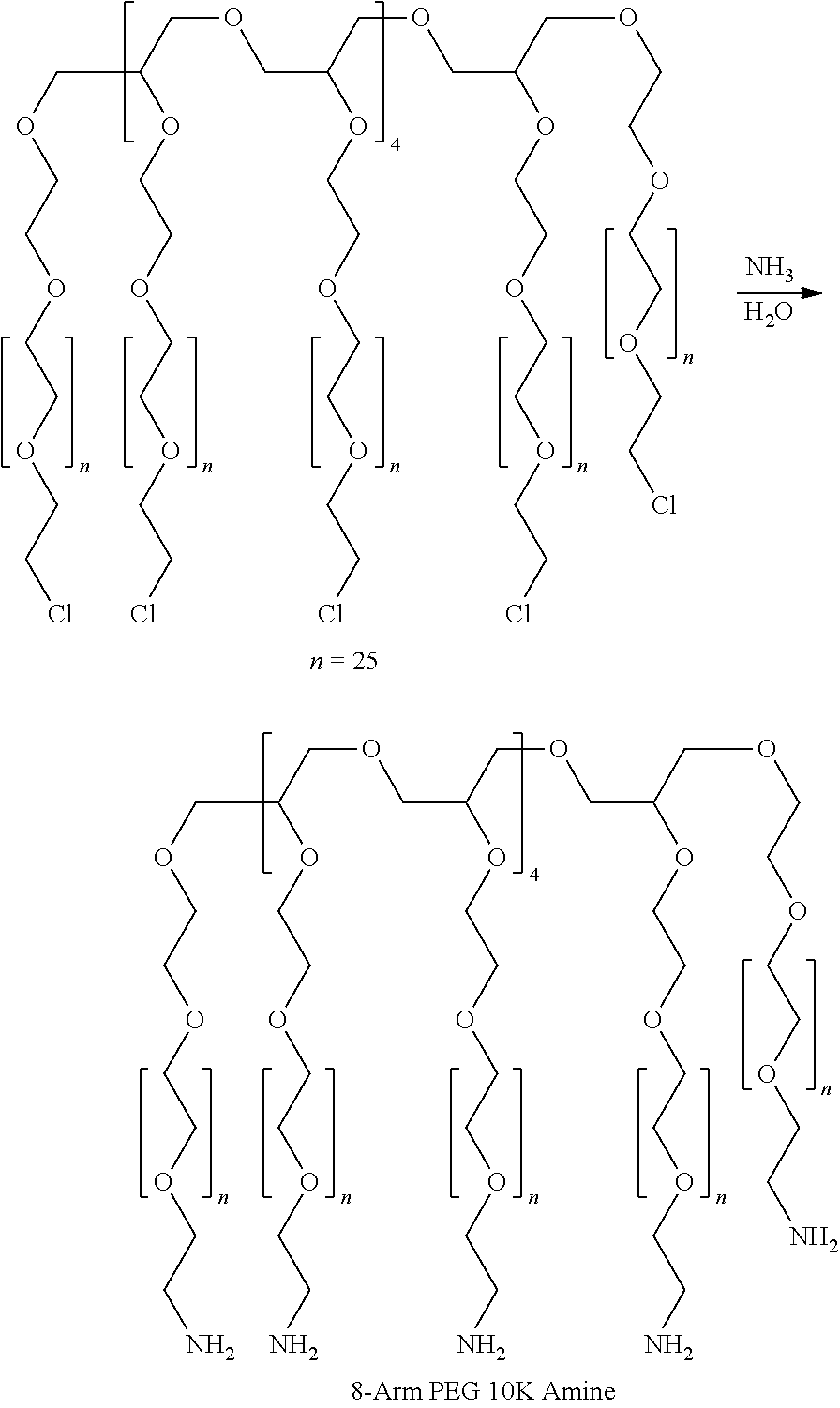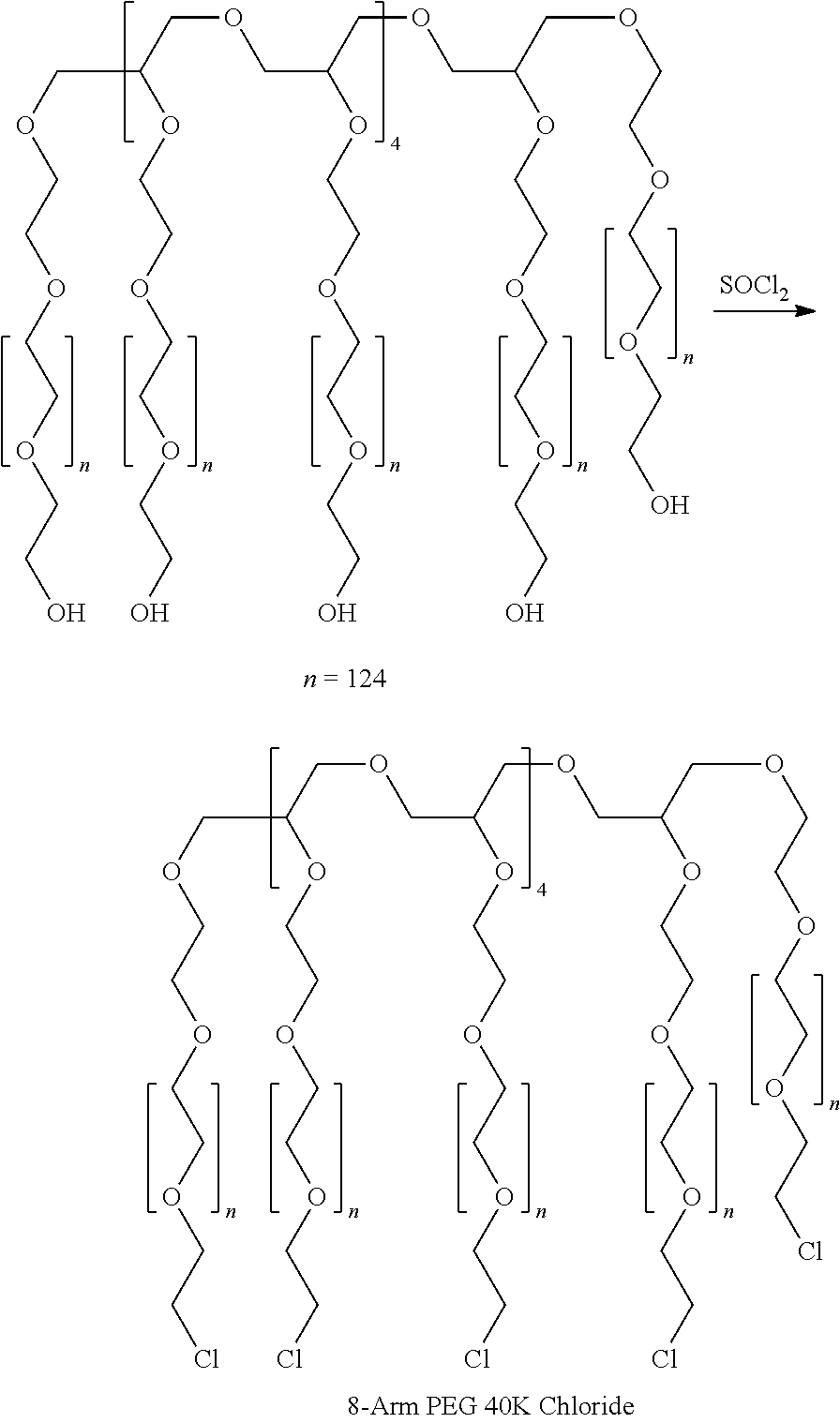High swell, long-lived hydrogel sealant
a hydrogel and sealant technology, applied in the field of medical adhesives, can solve the problems of limited internal application use of fibrin-based adhesives, slow curing of fibrin-based adhesives, and general inapplicability of conventional tissue adhesives to a wide range of adhesive applications
- Summary
- Abstract
- Description
- Claims
- Application Information
AI Technical Summary
Benefits of technology
Problems solved by technology
Method used
Image
Examples
examples
[0123]The present invention is further defined in the following Examples. It should be understood that these Examples, while indicating preferred embodiments of the invention, are given by way of illustration only. From the above discussion and these Examples, one skilled in the art can ascertain the essential characteristics of this invention, and without departing from the spirit and scope thereof, can make various changes and modifications of the invention to adapt it to various uses and conditions.
[0124]The meaning of abbreviations used is as follows: “min” means minute(s), “h” means hour(s), “sec” means second(s), “d” means day(s), “mL” means milliliter(s), “L” means liter(s), “μL” means microliter(s), “cm” means centimeter(s), “mm” means millimeter(s), “μm” means micrometer(s), “mol” means mole(s), “mmol” means millimole(s), “g” means gram(s), “mg” means milligram(s), “kg” means kilogram(s), “wt %” means percent by weight, “mol %” means mole percent, “M” means molar concentrat...
examples 1-7
Preparation of High Swell, Long-Lived Hydrogels by Reaction of Highly Oxidized Dextrans with Multi-Arm PEG Amines
[0151]The purpose of these Examples was to demonstrate the preparation of hydrogels from reaction of multi-arm PEG amine(s) with a highly oxidized dextran. The gel time to form the hydrogels was measured.
[0152]Into a small vial, 100 μL of an aqueous dextran aldehyde stock solution, as given in Table 1, was added. The vial was tilted and 100 μL of an aqueous solution containing a multi-arm PEG amine, prepared as described in General Methods, was added with care taken not to mix the two solutions. A timer was started and the two solutions were stirred together with the wooden end of a cotton swab. The initial gel time was defined as the observation of increased viscosity, such that a string formed when the wooden stirring rod was pulled from the gel. The final gel time was defined as the second when stirring pulled the gel from the sides of the vial so that the gel could be...
examples 8-21
In Vitro Degradation of Hydrogels—Comparison at the Same Solids Content
[0155]The purpose of these Examples was to demonstrate that the hydrogels formed by reaction of a highly oxidized dextran aldehyde with a multi-arm PEG amine degrade in vitro much more slowly than a hydrogel formed from a less oxidized dextran aldehyde and a multi-arm PEG amine, at the same solids content.
[0156]The hydrogel samples were prepared by mixing equal volumes of an aqueous solution of a dextran aldehyde and an aqueous solution of a multi-arm PEG amine, as shown in Table 2. After the hydrogels cured, the samples were weighed and placed inside jars containing PBS (phosphate buffered saline) at pH 7.4. The jars were placed inside a temperature-controlled shaker set at 80 rpm and 37° C. The samples were removed from the jars at various times, blotted to remove excess solution, and weighed. Then, the samples were returned to the jars.
[0157]The results are summarized in Table 2. The degradation day is defined...
PUM
| Property | Measurement | Unit |
|---|---|---|
| equivalent weight | aaaaa | aaaaa |
| weight-average molecular weight | aaaaa | aaaaa |
| number-average molecular weight | aaaaa | aaaaa |
Abstract
Description
Claims
Application Information
 Login to View More
Login to View More - R&D
- Intellectual Property
- Life Sciences
- Materials
- Tech Scout
- Unparalleled Data Quality
- Higher Quality Content
- 60% Fewer Hallucinations
Browse by: Latest US Patents, China's latest patents, Technical Efficacy Thesaurus, Application Domain, Technology Topic, Popular Technical Reports.
© 2025 PatSnap. All rights reserved.Legal|Privacy policy|Modern Slavery Act Transparency Statement|Sitemap|About US| Contact US: help@patsnap.com



